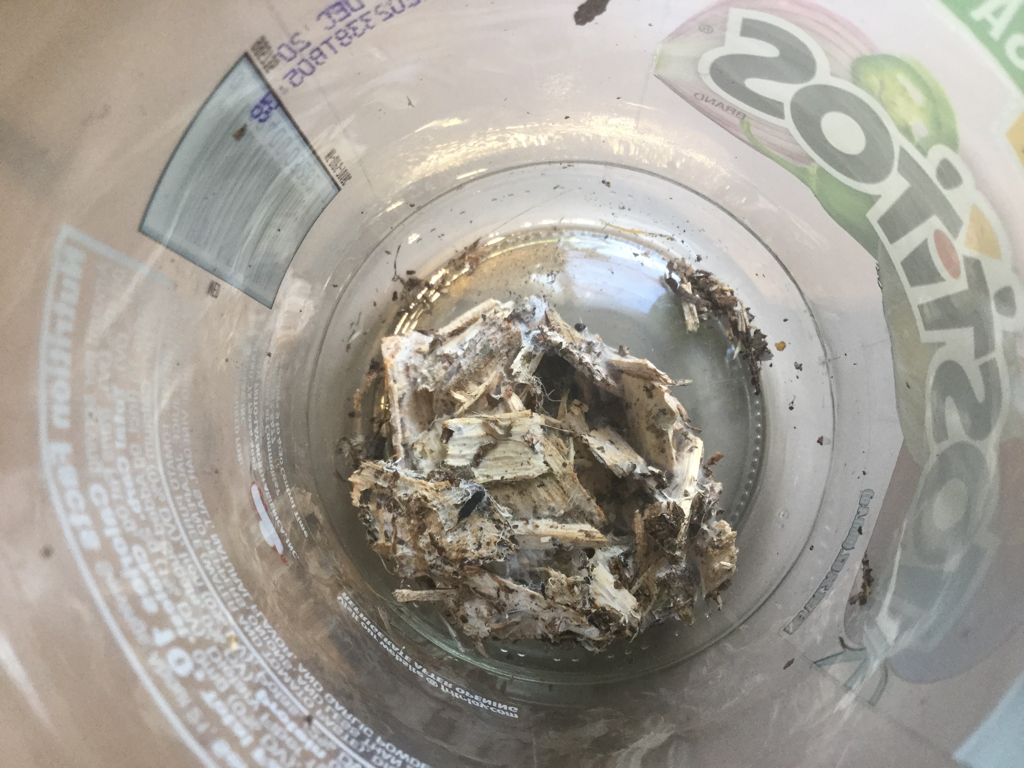|
We’ve got invasive jumping worms in our yard. They are voracious eaters who strip the soil of nutrients, therefore damaging surrounding plants. There are a few ways to identify them, mainly from the smooth band near their head and the distinctive way they move. They writhe faster than any other worm, usually in an ‘S’ shape, flipping back and forth. They live on the soil surface, which is another way to identify them. I discovered them in the wood chip pile when it was delivered, but I can’t figure out whether they were here already or somehow came with the wood chips. Either way, they’re here and we’ve got to figure out what to do. Most people say that there’s no way to get rid of them. Picking them out and killing them doesn’t work; they lay huge amounts of eggs so they always replenish themselves. Animals won’t eat them because it’s suspected that they retain metals. When I find them, I put in them in a jar of water to drown, and it takes DAYS. Last year, the manager at Natureworks applied a bunch of biochar to a vegetable bed that had the worms, and by fall there were none. This spring, as I spread biochar on areas where I saw baby jumping worms, I decided to try a controlled environment. The first image is pure biochar. It killed the worm very quickly. The second image is a small amount of biochar mixed with soil, which also killed the worms. Sorry the pictures are gross and sorry the experiment is gruesome, but I had to know. The lingering question I have about biochar is: what effect does it have on other life forms? Maybe other worms live deep enough below the soil surface, but what about the robins who pick at the soil? Also, in a large area, I don’t know whether you need to apply biochar to the whole area or simply the places you see worms. So far I have only done places where I’ve seen the worms. I also noticed that jumping worms were not living in areas with heavy mycelium. (Fungal growth that appears on wood chips). The worms I put in the jar with this mycelium also died, though not as quickly.
One other environment where I witnessed an absence of jumping worms was place I’d smothered with cardboard with wood chips on top in the fall. In one such area I had seen a jumping worm last fall, and I kept expecting to see them in the spring. None so far. I think the cardboard pressed tightly to the ground deters them. I also do not see them in the grass. So it seems that these worms’ favorite environment is open, disturbed soil with some organic matter available, such as leaves, wood chips, or straw. An area smothered heavily with cardboard does not seem to support them. I feel better having discovered a few ways to deter them from a location, though there seems to be no perfect silver bullet.
1 Comment
|
Categories
All
Archives
August 2021
|
Proudly powered by Weebly

 RSS Feed
RSS Feed